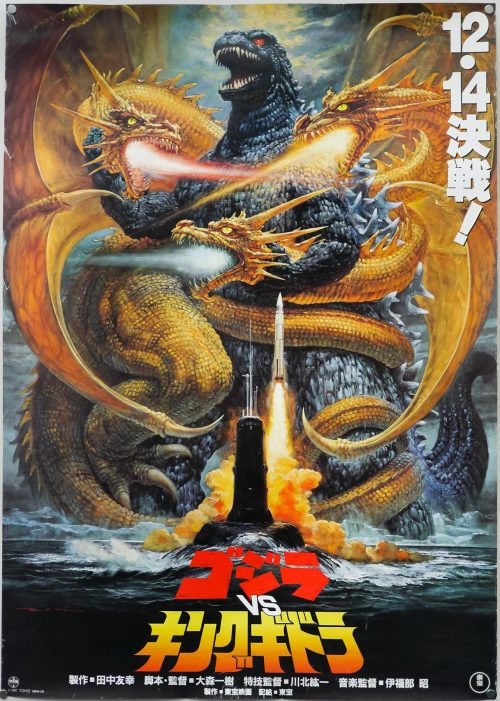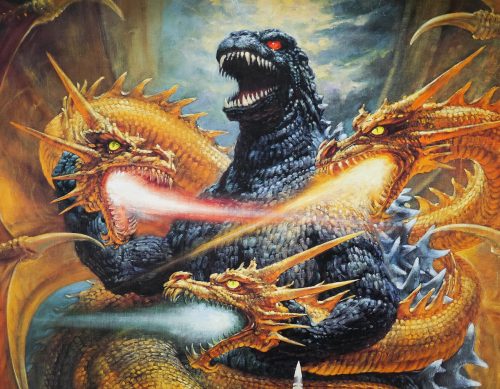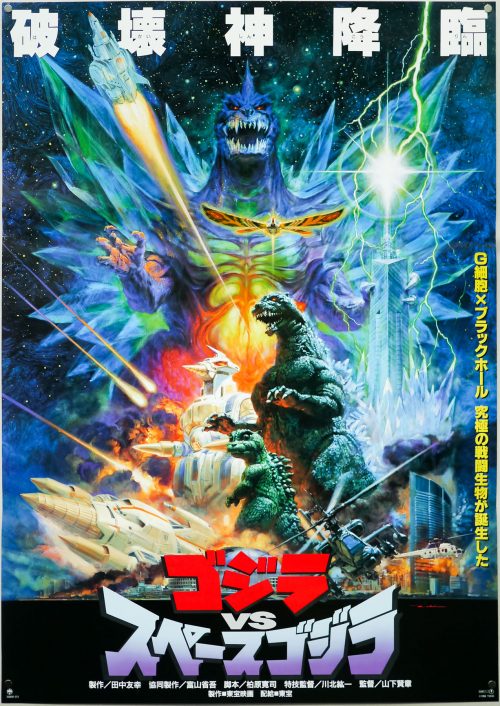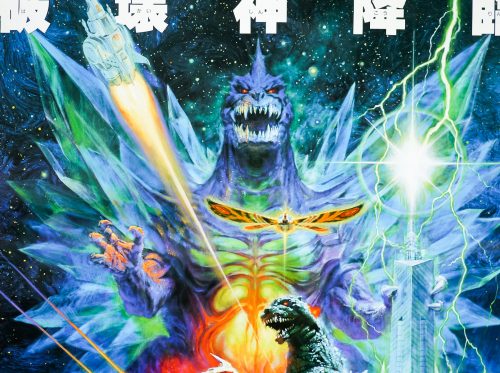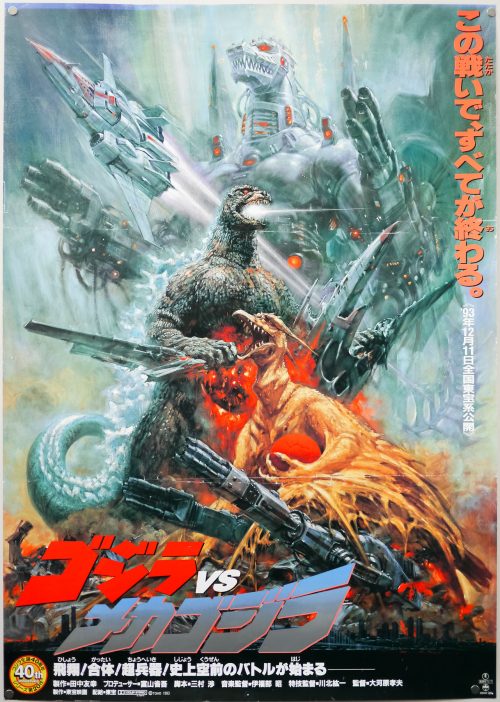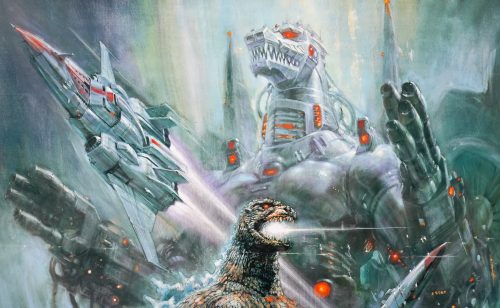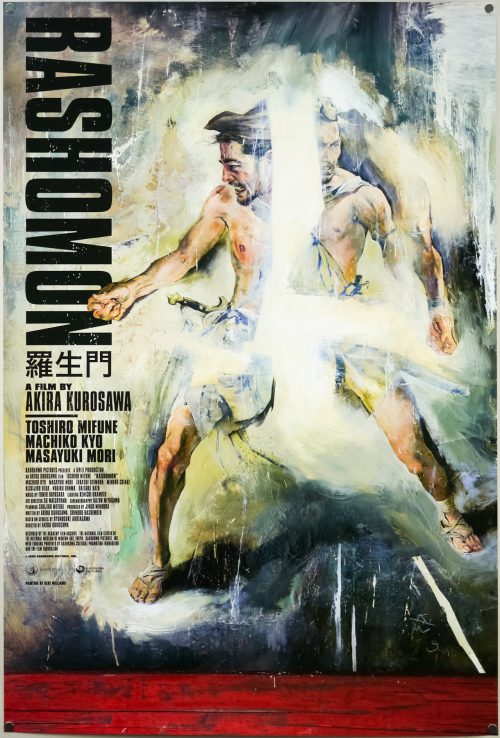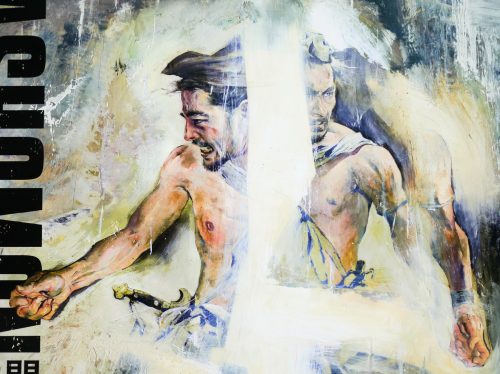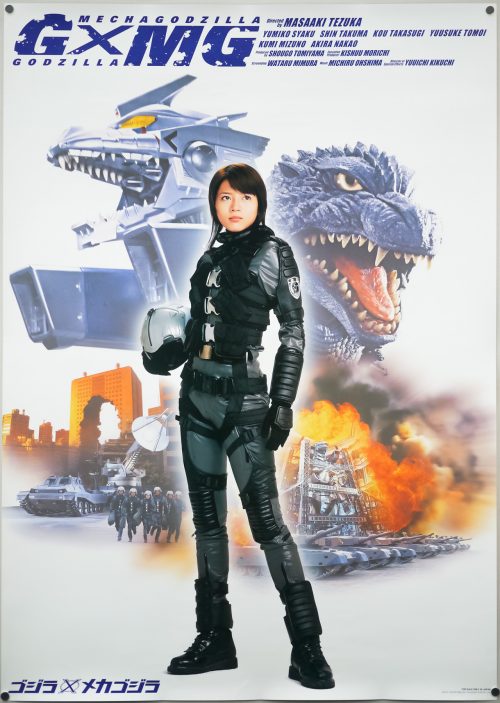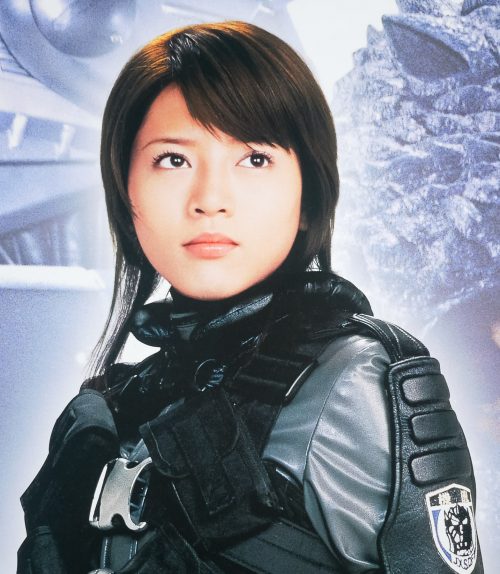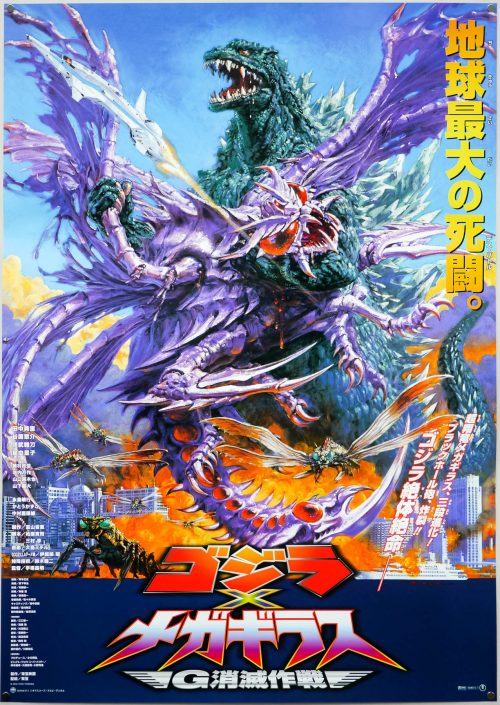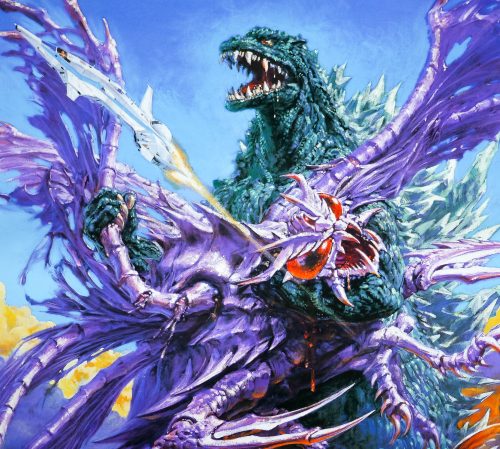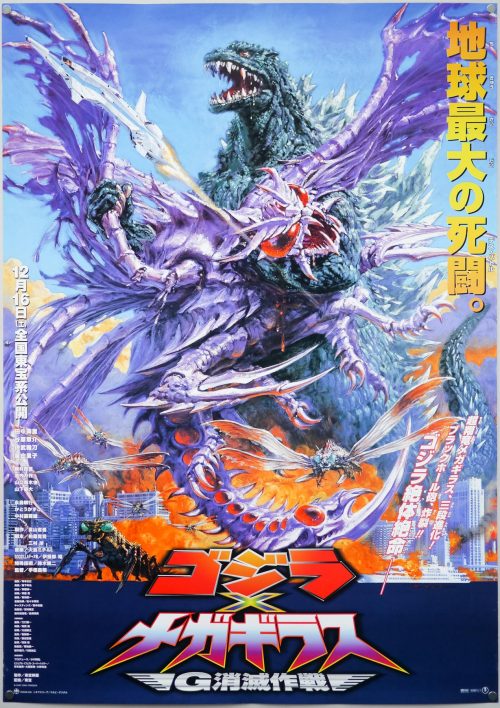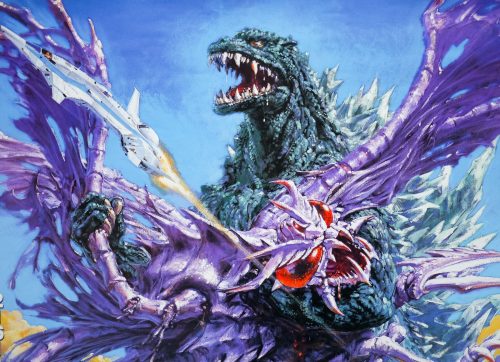- AKA
- Gojira vs. Kingu Gidorâ (Japan - original title)
- Year of Film
- 1991
- Director
- Kazuki Ohmori
- Starring
- Kosuke Toyohara, Anna Nakagawa, Megumi Odaka, Katsuhiko Sasaki, Akiji Kobayashi, Tokuma Nishioka, Yoshio Tsuchiya, Kenji Sahara, Kôichi Ueda, Sô Yamamura
- Origin of Film
- Japan
- Genre(s) of Film
- Kosuke Toyohara, Anna Nakagawa, Megumi Odaka, Katsuhiko Sasaki, Akiji Kobayashi, Tokuma Nishioka, Yoshio Tsuchiya, Kenji Sahara, Kôichi Ueda, Sô Yamamura,
- Type of Poster
- B1
- Style of Poster
- Advance - artwork
- Origin of Poster
- Japan
- Year of Poster
- 1991
- Designer
- Unknown
- Artist
- Noriyoshi Ohrai
- Size (inches)
- 28 13/16" x 40 7/16"
- SS or DS
- SS
- Tagline
- --
A stunning piece of artwork on this Japanese B1 poster for Godzilla vs King Ghidorah, which was the 18th film in the series featuring the King of Monsters. The film was the third release in the second generation of Godzilla films, which were part of the Heisei era of Japanese monster movies (daikaiju eiga). The monster movie eras are named after the Japanese emperor at the time, so the first generation of Godzilla films were part of the Shōwa era.
The story sees the legendary monster facing off against one of his greatest foes, the three-headed dragon monster King Ghidorah. The origin of the monster has changed over the years and this film is no exception; in this story Ghidorah is the result of the irradiated fusing of three genetically-engineered bat-like creatures called ‘Dorats’. The monster is then unleashed on Japan by the villains in the film, time-travellers from the 23rd century called the Futurians. By the end of the film Godzilla has to battle Mecha-King Ghidorah, a resurrected cyborg version that is brought to Tokyo from the future – typically brilliantly bonkers story-telling!
The artwork on the poster is by Noriyoshi Ohrai who is something of an enigma, even in his native Japan. I’ve been unable to find much about him beyond a few pages like this one on the Star Wars Wookiepedia. He’s responsible for a number of Star Wars posters, including this lovely 1982 B2 to celebrate the release of the Japanese dubbed version of the original film and the brilliant design for The Empire Strikes Back.
Ohrai painted a poster for each of the Heisei era of Godzilla films, which were always accompanied by a photographic-style poster. I will be adding more of the Ohrai Godzilla posters over the coming weeks.
The other Ohrai posters I’ve added to the site so far can be seen by clicking here.
